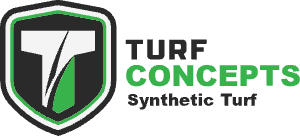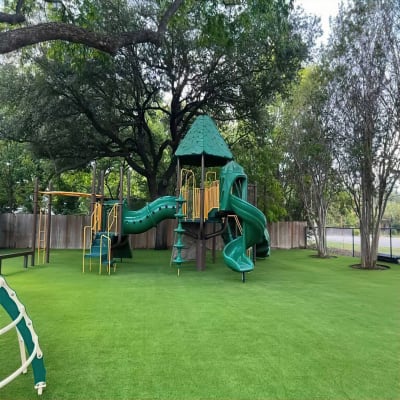Is Your Green Lawn Burning Your Wallet? The Real Cost of Artificial Turf Revealed!
Deciding on artificial turf is a game-changer for both residential and commercial spaces, offering a lush, green look year-round with minimal maintenance. However, navigating through artificial turf pricing can feel like a maze without the right guide. Historically, the evolution of artificial turf from its first significant installation in the 1960s to today's advanced options has seen a wide range of pricing models, influenced by material quality, durability, and technological advancements. Understanding these factors is key to making an informed decision that balances cost with quality. This post aims to demystify artificial turf costs, ensuring you're equipped with the knowledge to choose the best option for your space without breaking the bank.
Key Takeaways
- Consider the Long-Term Savings: While the initial cost of artificial turf might be higher than natural grass, the long-term savings on water, maintenance, and lawn care products make it a cost-effective choice.
- Quality Matters: Investing in high-quality artificial turf ensures durability, better aesthetics, and a more realistic look, which can significantly enhance your property's value.
- Understand the Installation Process: A proper installation is crucial for maximizing the lifespan and appearance of your artificial turf. Consider professional installation to avoid common pitfalls.
- Maintenance is Still Key: Although artificial turf requires less maintenance than a natural lawn, regular cleaning, and care are essential to keep it looking its best and extend its life.
- Customization Can Elevate Your Space: Explore customization options for artificial turf to perfectly match your landscaping needs and personal preferences, enhancing both functionality and visual appeal.
- Stay Updated on Innovations: The artificial turf industry is continuously evolving, with new advancements offering better quality and more eco-friendly options. Keeping informed can help you make the best choice for your space.
Turf vs Natural Lawn
Initial Costs
The upfront cost of purchasing artificial turf averages between $9.50 to $15 per square foot for quality turf. In contrast, installing natural grass can be less expensive initially, with costs ranging from $0.14 to $0.60 for seed or around $0.35 to $0.85 per square foot for sod. However, the initial investment in artificial turf might be offset by potential financial incentives or rebates offered for eco-friendly landscaping choices in some areas.
Long-term Savings
Over time, artificial turf proves to be a cost-effective choice due to significant long-term savings. Homeowners save on water bills, lawn care products, and maintenance services. With a lifespan of 15 to 25 years, artificial turf's durability means it rarely needs replacing. This longevity reduces the overall expense compared to real grass which requires regular upkeep and re-sodding every few years.
Environmental Impact
Artificial turf greatly reduces water usage compared to traditional lawns, which is a crucial benefit in drought-prone regions. By eliminating the need for watering a lawn, homeowners can conserve thousands of gallons of water annually. Furthermore, since there's no need for pesticides and fertilizers, artificial turf helps reduce harmful runoff into local waterways. Some products also incorporate recycled materials, enhancing their environmental friendliness.
Maintenance Needs
Maintaining an artificial lawn involves simple activities such as brushing to keep fibers upright and occasional rinsing to remove dust or pollen. Unlike natural lawns, artificial turf eliminates the need for time-consuming chores like mowing, weeding, and fertilizing. It also offers ease of pet waste cleanup and is resistant to stains, making it an appealing option for many homeowners.
Benefits of Artificial Turf
Water Conservation
Every year, homeowners who switch to artificial turf save thousands of gallons of water. This is crucial in areas facing water scarcity. By using synthetic grass, families contribute significantly to conservation efforts. In regions like California and Arizona, where droughts are common, this saving is vital.
Water conservation groups praise artificial turf for its role in sustainable landscaping. They endorse it as a practical solution to the ongoing water crisis.
Year-Round Greenery
One of the standout benefits of artificial turf is its aesthetic consistency. It remains green and vibrant no matter the season. This is a game-changer for properties in areas with extreme weather or strict water use restrictions.
Homeowners enjoy lush lawns without worrying about rain or snow. This makes artificial turf an attractive option for maintaining beautiful landscapes all year round.
Pet-Friendly Options
Manufacturers now offer artificial turf designed specifically for pets. These options are durable and resist odors well. They prevent pets from digging up the yard and creating muddy patches.
Cleaning up after pets is easy on synthetic grass. Many products allow liquids to drain away quickly, making cleanup simple and straightforward.
Safe Play Areas
Artificial turf can be outfitted with cushioning to protect children from falls. This makes it an ideal choice for play areas. Without the need for pesticides or chemicals, it's a safer environment for kids to play in.
Families also appreciate the reduced risk of allergies from grass pollen on synthetic lawns. This benefit alone makes artificial turf a popular choice for homes with children.
Cost-Benefit Analysis
Installation Expenses
Artificial turf comes with upfront costs that include both labor and materials. Professional installation ensures the job is done right but can be pricey. It involves excavating the existing lawn, laying down a base, and installing the turf itself. Materials such as the synthetic grass, base materials, and infill are essential components of these costs.
DIY installation can save money but lacks the assurance of professional expertise. The potential for mistakes can lead to additional expenses down the line. Ground preparation is a hidden cost not to be overlooked. Proper drainage and leveling are critical to avoid future issues.
Maintenance Savings
Switching to artificial turf brings significant annual savings on lawn care. Homeowners no longer need to buy fertilizers, weed killers, or pay for aeration services. The maintenance of artificial turf involves occasional brushing and rinsing, which requires minimal effort and cost.
The long-term durability of artificial turf minimizes the need for repairs or replacement. This aspect contributes greatly to its economic benefits, making it a financially sound choice in the long run.
Increased Property Value
Experts agree that artificial turf can boost home resale values. Its appeal lies in the low-maintenance landscaping it offers potential buyers. A well-maintained artificial lawn enhances curb appeal significantly.
Studies point out that homes with artificial turf tend to sell faster due to their attractive exteriors. This feature makes them stand out in competitive housing markets.
Choosing Quality Artificial Turf
Durability Factors
The materials and manufacturing processes of artificial turf significantly impact its durability. High-quality synthetic lawns use advanced polymers that resist fading and wear. The backing material also plays a crucial role in ensuring the turf remains intact over years of use.
Manufacturers often offer warranty periods ranging from 8 to 15 years, serving as a testament to the product's longevity. This assurance is vital for consumers seeking value for their investment in artificial turf installation costs.
Artificial turf designed to withstand heavy foot traffic, pet damage, and adverse weather conditions offers peace of mind. Its resilience against these factors makes it an ideal choice for both residential and commercial spaces.
Aesthetic Appeal
Today's fake grass comes in various textures, colors, and blade lengths. These options allow it to mimic natural grass types closely, enhancing its aesthetic appeal. Such diversity enables homeowners and businesses to customize their outdoor spaces according to specific landscape design needs.
Advancements in technology have significantly improved the realism and natural appearance of artificial turf. These innovations provide a lush, vibrant lawn year-round without the maintenance required by natural grass.
Landscape design flexibility is another significant advantage of synthetic lawns. They can transform areas where natural grass would struggle to grow, offering green solutions for shaded or overly wet locations.
Eco-Friendly Materials
The shift towards sustainable practices in manufacturing has led to increased use of recycled plastics and rubbers in producing artificial turf. This approach not only reduces waste but also contributes to environmental conservation.
Certifications and standards for environmental safety ensure that artificial turf installations do not harm the surrounding ecosystem. These guidelines promote the production of non-toxic and lead-free options, safeguarding both human health and wildlife.
Consumers are increasingly drawn to eco-friendly materials in their landscaping choices. Artificial turf that aligns with these values supports a greener planet while providing durable and attractive ground cover.
Installation Process Insights
Professional Services
Professional services for artificial turf span from initial consultations to the final installation and ongoing maintenance. These experts provide invaluable advice tailored to your specific needs, ensuring that you choose the right type of turf as discussed in the previous section. By opting for professional installers, homeowners benefit from warranty protection and guidance on the best practices for their artificial lawn's upkeep.
Professionals like Turf Concepts ensure that the installation process includes proper groundwork preparation, which is critical for effective drainage and extending the lifespan of the turf. They use specialized tools and techniques to avoid common installation errors, guaranteeing a smooth surface without bumps or gaps. The advantage of hiring professionals doesn't just lie in their expertise but also in their ability to foresee potential issues, ensuring proper drainage and overall longevity of your artificial lawn.
DIY Possibilities
For those inclined towards tackling projects themselves, installing artificial turf can be a rewarding challenge. The essential tools for a DIY installation include a turf cutter, compactor, landscape fabric, adhesive, and joining tape. Alongside these tools, detailed preparation steps are necessary to ensure a successful installation. This approach not only offers potential savings but also provides a sense of accomplishment once completed.
However, embarking on this journey requires caution. One common pitfall is underestimating the importance of base preparation, which is crucial for preventing waterlogging and ensuring durability. Without proper groundwork, even high-quality turf can suffer from poor drainage and uneven wear. Therefore, thorough research and preparation are paramount to avoid costly mistakes and achieve a result that closely matches professional installations.
Care and Maintenance Tips
Cleaning Routines
Maintaining the pristine look of artificial turf is simpler than many think. Regular sweeping removes debris and prevents accumulation. For a deeper clean, hosing down the turf washes away dust and pollen.
Spot cleaning is essential for spills or pet waste. Use mild soap and water for most stains. For tougher spots, a vinegar solution works well. This routine keeps the turf fresh and vibrant.
Deep cleaning should happen every month or as needed. Use a brush with soft bristles to avoid damaging the fibers. Specialized turf cleaners are available but optional. Compared to natural lawns, artificial turf demands less effort and resources for upkeep.
Repair Guidelines
Minor issues like loose seams or flattened blades are common but fixable. For seams, adhesive products can reattach them securely. Flattened blades regain their shape with gentle brushing.
Major repairs often require professional help. This includes tears or significant wear that DIY methods can't fix. Professionals ensure the job is done correctly, extending the turf's lifespan.
For those who prefer DIY fixes, repair kits are available. They include instructions and necessary materials. These kits empower homeowners to tackle minor repairs confidently.
Customization Options
Design Flexibility
Artificial turf offers unmatched design flexibility. Creative uses abound in landscaping, sports fields, and even indoor areas. Homeowners and businesses alike can cut and shape the turf to fit unique spaces. This customization allows for intricate designs not possible with natural grass.
Landscapers often integrate artificial turf with other elements like pavers, rocks, or flower beds. This blend enhances both aesthetics and functionality. It creates visually appealing outdoor spaces that require minimal maintenance compared to traditional lawns.
Application Varieties
Artificial turf isn't just for lawns anymore. Its applications range from residential gardens to commercial spaces and sports arenas. Each use case has a specific type of turf designed for it, balancing durability with visual appeal.
- Residential lawns
- Commercial landscapes
- Sports fields
- Playgrounds
- Rooftops
- Indoor spaces
For instance, sports fields need highly durable turf to withstand heavy use, while residential areas might prioritize softness and a natural look. Unique installations on rooftops or indoor spaces showcase the versatility of artificial turf. These applications provide green spaces where natural grass would be impractical or impossible to grow.
Real-Life Transformations
Before and After
The shift from natural grass to artificial turf marks a significant transformation for many properties. Owners often marvel at the dramatic visual upgrade. Previously, they battled with patchy, brown spots and uneven ground. Now, they enjoy lush, green lawns year-round.
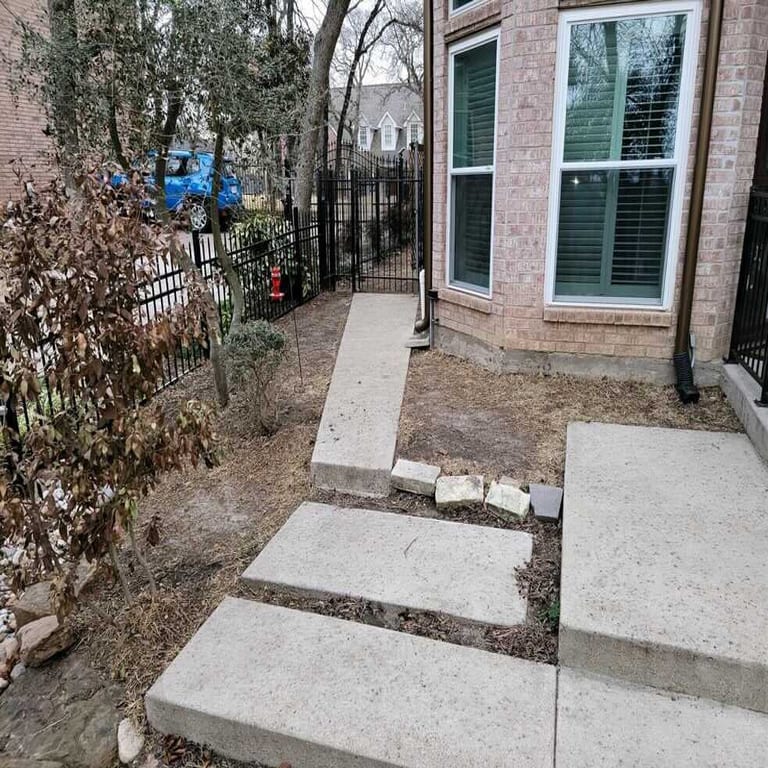
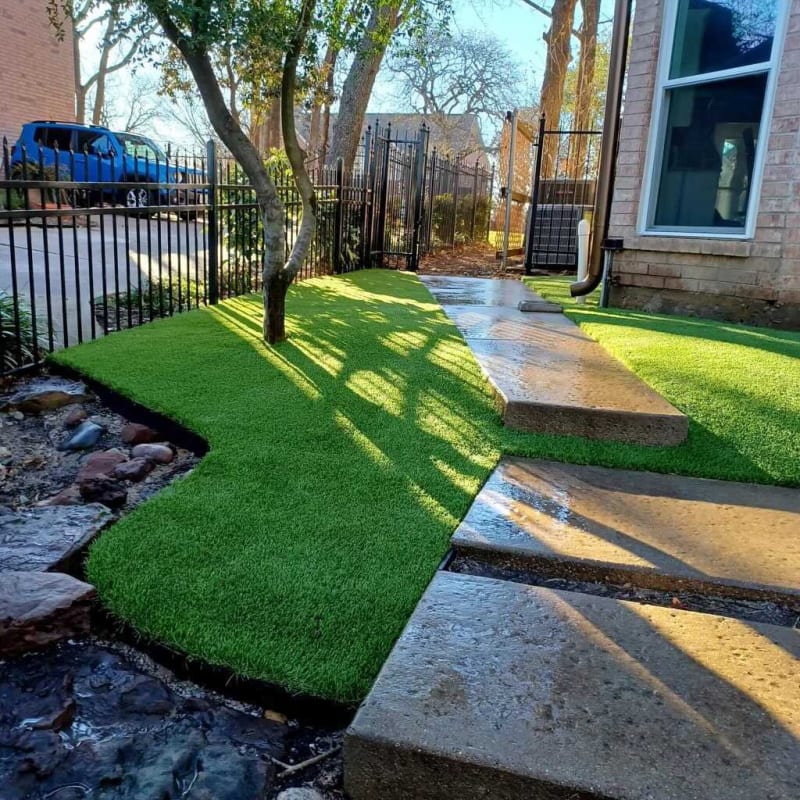
One notable case involved a community park that struggled with water restrictions and high maintenance costs. After installing artificial turf, the park became a vibrant space for families, regardless of the season. The change was not just visual; it also enhanced the functionality of the space. The turf's durability withstands heavy foot traffic without wear and tear.
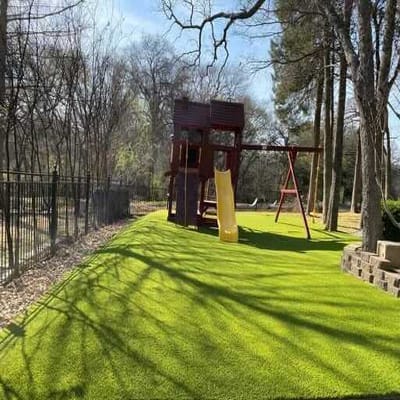
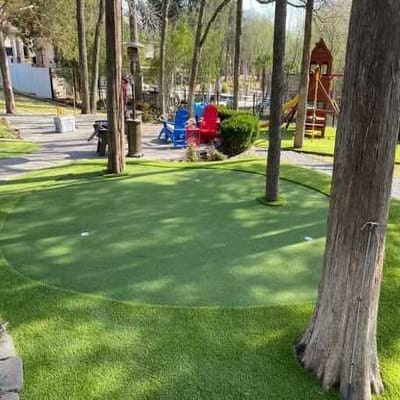

Customer Testimonials
Homeowners and commercial property managers alike share glowing reviews about their switch to artificial turf. They often highlight significant savings in maintenance costs as a top benefit. One homeowner shared how they saved thousands on water bills alone within the first year.
Sports facility managers praise the consistent playing surface that artificial turf provides. It eliminates game cancellations due to waterlogged fields. A high school football coach mentioned how their injury rates dropped after transitioning to an artificial turf field.
Environmental impact stories stand out as well. A hotel owner implemented artificial turf in their landscaping to contribute to water conservation efforts in their drought-prone area. This move not only reduced their environmental footprint but also attracted eco-conscious guests.

Staying Informed on Innovations
Latest Trends
Recent innovations in artificial turf technology are reshaping expectations. Manufacturers now incorporate cooling systems to combat the heat absorption issue, making outdoor spaces more comfortable during hot weather. This advancement is a game-changer for areas where temperatures soar.
Another leap forward is the push towards enhanced realism. Today's artificial grass mimics real turf so closely that it's often hard to tell the difference without a close inspection. This realism extends not just to appearance but also to texture, providing a natural feel underfoot.
Design trends are evolving too. Integrating artificial turf with natural landscaping elements has become popular. This blend offers the best of both worlds – the low maintenance of synthetic grass and the beauty of natural plants. It's a trend that caters to those seeking aesthetic appeal without the constant upkeep.
The use and acceptance of artificial turf have grown across various sectors. Schools, public parks, and residential areas are adopting it for its durability and low maintenance costs. Its ability to withstand heavy use while staying green all year round makes it an attractive option for many.
Future Developments
Looking ahead, advancements in materials and manufacturing promise greater sustainability and performance. Researchers are exploring options like bio-based plastics which could reduce the environmental footprint of artificial turf. These materials might offer better recyclability and less reliance on petroleum-based products.
Regulatory changes could also play a significant role in shaping the future of artificial turf. As awareness grows about microplastic pollution and other environmental concerns, governments may introduce stricter guidelines for production, installation, and disposal of synthetic grass.
Ongoing research into environmentally friendly alternatives is promising. Scientists are working on high-performing options that don't sacrifice ecological benefits for utility. These alternatives aim to provide all the advantages of traditional artificial turf—durability, low maintenance—while being kinder to the planet.
Summary
Navigating the world of artificial turf doesn't have to be daunting. From weighing the pros and cons of natural lawns, understanding the benefits, diving into cost-benefit analyses, selecting quality materials, and getting insights on installation and maintenance—this guide has covered it all. You've seen how customization can transform spaces and how staying ahead with innovations ensures your investment remains top-notch. Remember, the right artificial turf not only elevates your space but also offers long-term savings and convenience. It's about making an informed choice that aligns with your lifestyle needs and aesthetic preferences.
Now's the time to take action. Whether you're ready to revamp your lawn or still pondering over options, keep these insights in mind. Explore, ask questions, and don't hesitate to seek professional advice to make your artificial turf journey smooth. Your perfect outdoor space is within reach—dive in and make it happen.
Frequently Asked Questions
How does the cost of artificial turf compare to natural grass over time?
Artificial turf typically involves a higher upfront cost than natural grass but can save money in the long run due to lower maintenance requirements and water usage.
What are the main benefits of choosing artificial turf over a natural lawn?
Artificial turf offers durability, minimal maintenance, no watering or mowing, and year-round green appearance, making it a cost-effective and eco-friendly option.
Can you provide a brief overview of what goes into the cost-benefit analysis of artificial turf?
The cost-benefit analysis considers initial installation costs, maintenance expenses, lifespan, and savings on water bills and lawn care products, highlighting long-term financial advantages.
How do I choose high-quality artificial turf?
Look for turf with a high stitch rate, durable backing, UV protection, and warranty. Prioritize products from reputable manufacturers with positive reviews.
What insights can you offer about the installation process for artificial turf?
Professional installation ensures optimal results. It involves ground preparation, laying a weed barrier, installing the turf, securing edges, and adding infill for stability and a natural look.
What are some essential care and maintenance tips for artificial turf?
Regularly remove debris with a leaf blower or broom, rinse occasionally to clean spills or pet waste, and brush up fibers to keep them upright. Avoid heat sources as they can melt the fibers.
Are there customization options available for artificial turf?
Yes! You can customize pile height, color shades, and density for specific uses like landscaping or sports fields. This allows personalization to fit your aesthetic preferences and functional needs.
How have real-life transformations with artificial turf impacted homeowners' outdoor spaces?
Homeowners report significant improvements in their outdoor aesthetics and functionality. They enjoy more time outdoors with less upkeep hassle and increased property value from these transformations.

